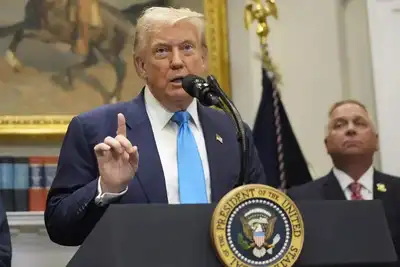In August 2025, U.S. President Donald Trump’s latest tariff policies have sent ripples through global markets, reshaping trade dynamics and prompting
In August 2025, U.S. President Donald Trump’s latest tariff policies have sent ripples through global markets, reshaping trade dynamics and prompting nations like India to reassess their economic strategies. The imposition of a 25% tariff on Indian imports, coupled with an unspecified penalty tied to India’s trade with Russia, marks a significant shift in U.S. trade policy. For India, a nation balancing robust domestic growth with global trade ambitions, understanding the implications of these tariffs is critical to navigating the evolving economic landscape.
The tariffs, effective from August 7, 2025, target a wide range of Indian exports, with sectors like pharmaceuticals, garments, precious stones, auto parts, and electronics facing the brunt. Recent reports estimate that India’s $86.5 billion in exports to the U.S. in the 2024-25 fiscal year could face a significant cost increase, potentially reducing demand for Indian goods in the American market. Experts from the Bank of Baroda suggest that these tariffs could shave 0.2% off India’s GDP growth, bringing projections from 6.6% to 6.4%. While this macroeconomic impact appears modest, the sector-specific fallout is more concerning. For instance, the pharmaceutical industry, which accounts for $12.2 billion in exports to the U.S., may face pricing pressures, though it has so far escaped immediate tariff hikes.
India’s response to the tariffs has been measured yet firm. In February 2025, Prime Minister Narendra Modi and President Trump announced plans for a bilateral trade deal by fall, signaling a commitment to dialogue. India has already made concessions, reducing tariffs on U.S. goods like motorcycles and whiskey, and expressed willingness to lower duties on 55% of its imports from the U.S., valued at $23 billion. However, India remains steadfast on protecting its agriculture and dairy sectors, which it considers non-negotiable due to their importance to millions of low-productivity farmers. This stance has been a sticking point in negotiations, as the U.S. pushes for greater market access.
Trump’s tariffs are not just about economics—they carry geopolitical weight. The additional penalty on India stems from its continued purchase of Russian oil, which accounts for 35-40% of its energy imports. U.S. officials, including White House deputy chief of staff Stephen Miller, have criticized India for indirectly financing Russia’s war in Ukraine. India, however, defends its energy security strategy, emphasizing the need for affordable oil to fuel its growing economy. This tension underscores the delicate balance India must strike between maintaining strategic autonomy and fostering ties with the U.S., its largest export market.
The broader global context adds complexity. Trump’s tariffs, which also target Canada, Mexico, China, and 60 other nations, have sparked fears of a global trade war. Analysts warn that rising costs for raw materials like steel and aluminum could disrupt supply chains, affecting industries worldwide. For India, this presents both challenges and opportunities. As global trade routes shift, India could capitalize on redirected supply chains, particularly in copper and electronics, where competitors like China face steeper 54% tariffs. Fiji’s Acting Prime Minister Biman Prasad recently noted that countries like India could benefit from cheaper goods as nations offload excess capacity, a dynamic India’s exporters might leverage.
To mitigate the tariffs’ impact, India is diversifying its trade partners. Recent trade agreements with the UAE and the UK, alongside production-linked incentive schemes for electronics and textiles, aim to bolster domestic manufacturing and reduce reliance on the U.S. market. The Indian commerce ministry has also signaled readiness to impose retaliatory tariffs on U.S. goods like steel and automobiles if negotiations falter. Meanwhile, industry leaders urge exporters to absorb some tariff costs or diversify into markets like Europe and ASEAN to maintain competitiveness.
For India, the path forward lies in strategic negotiation and adaptability. The Modi government’s focus on self-reliance through initiatives like Atmanirbhar Bharat aligns with the need to strengthen domestic industries while pursuing trade deals that preserve national interests. As global trade recalibrates under Trump’s policies, India’s ability to balance diplomacy, economic diversification, and sector-specific strategies will determine its resilience in this new era of protectionism.



COMMENTS